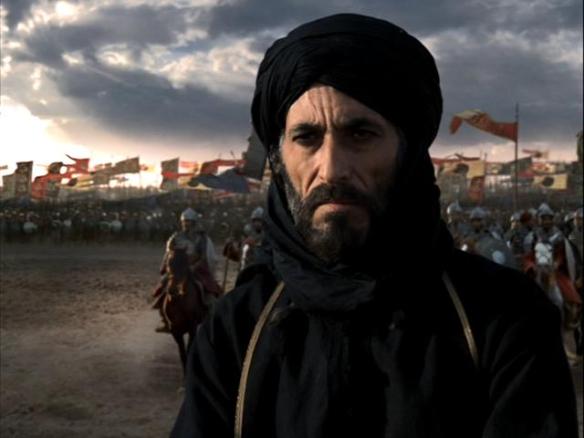
As Robert Irwin pointed out, “In Britain, there ha[s] been a long tradition of disparaging the Crusaders as barbaric and bigoted warmongers and of praising the Saracens as paladins of chivalry. Indeed, it is widely believed that chivalry originated in the Muslim East. The most perfect example of Muslim chivalry was, of course, the twelfth-century Ayyubid Sultan Saladin.”
This view of the chivalrous Saladin is rampant among historians. In his esteemed study The Kingdom of the Crusaders, Dana Carleton Munro put it this way: “When we contrast with this [the crusader conquest of Jerusalem] the conduct of Saladin when he captured Jerusalem from the Christians in 1187, we have a striking illustration of the difference between the two civilizations and realize what the Christians might learn from contact with the Saracens in the Holy Land.”36 (Notice the present tense.) In similar fashion, the distinguished Samuel Hugh Moffett noted that Saladin “was unusually merciful for his time. He allowed the Crusaders, who had entered it [Jerusalem] in a bloodbath, to leave the city in peace.” It was in this same spirit that, in 1898, Germany’s Kaiser Wilhelm visited Damascus and placed a bronze laurel wreath on Saladin’s tomb. The wreath was inscribed to “the Hero Sultan Saladin…From one great emperor to another.”
Admiration for Saladin is not a recent invention. Since the Enlightenment, Saladin has “bizarrely” been portrayed “as a rational and civilized figure in juxtaposition to credulous barbaric crusaders.” Even Edward Gibbon, writing in 1788, noted, “Of some writers it is a favourite and invidious theme to compare the humanity of Saladin with the massacre of the first crusade…but we should not forget that the Christians offered to capitulate, and that the Mahometans of Jerusalem sustained the last extremities of an assault and storm.” There we have it, one of the primary rules of warfare at that time: cities were spared if they did not force their opponents to take them by storm; they were massacred as an object lesson to other cities if they had to be stormed, since this usually inflicted heavy casualties on the attackers. This rule did not require cities to surrender quickly: long sieges were acceptable, but only until the attackers had completed all of the preparations needed to storm the walls. Of course, cities often did not surrender at this point because they believed the attack could be defeated.
Not only have Saladin’s modern fans ignored this rule of war; they have carefully ignored the fact, acknowledged by Muslim writers, that Jerusalem was an exception to Saladin’s usual butchery of his enemies. Saladin had looked forward to massacring the Christians in Jerusalem, but he offered about half of them a safe conduct in exchange for their surrender of Jerusalem without further resistance. In most other instances Saladin was quite unchivalrous. Following the Battle of Hattin, for example, he personally participated in butchering some of the captured Knights Templars and Hospitallers and then sat back and enjoyed watching the execution of the rest of them. As told by Saladin’s secretary, Imad ed-Din: “He [Saladin] ordered that they should be beheaded, choosing to have them dead rather than in prison. With him was a whole band of scholars and Sufis and a certain number of devout men and ascetics; each begged to be allowed to kill one of them, and drew his sword and rolled back his sleeve. Saladin, his face joyful, was sitting on his dais; the unbelievers showed black despair.” It seems fitting that during one of his amazing World War I adventures leading irregular Arab forces against the Turks, T. E. Lawrence “liberated” the Kaiser’s bronze wreath from Saladin’s tomb, and it now resides in the Imperial War Museum in London.